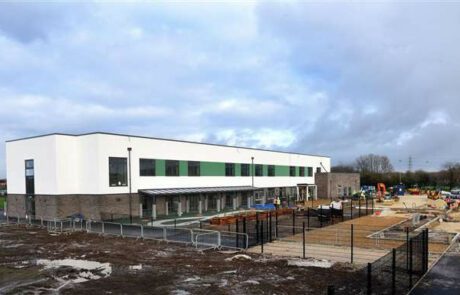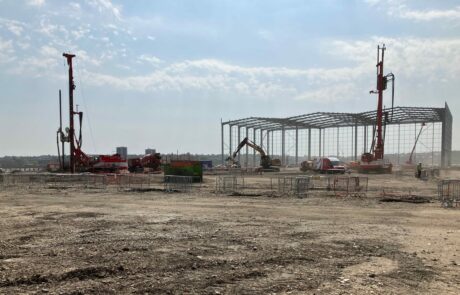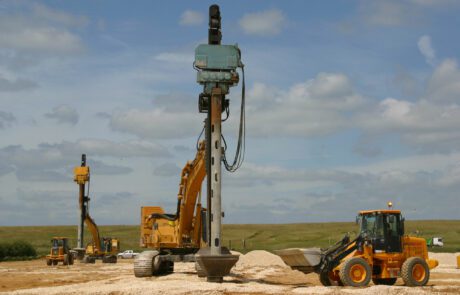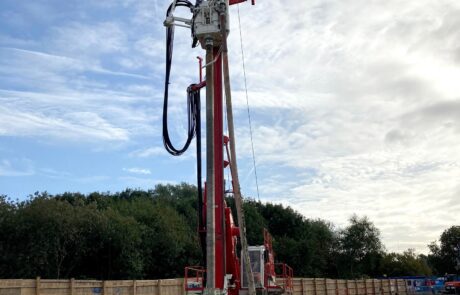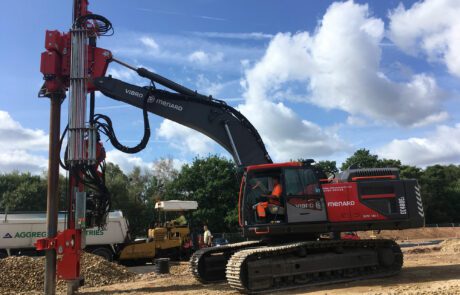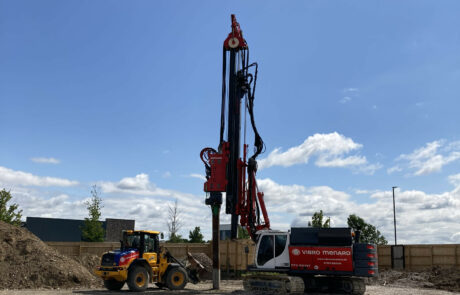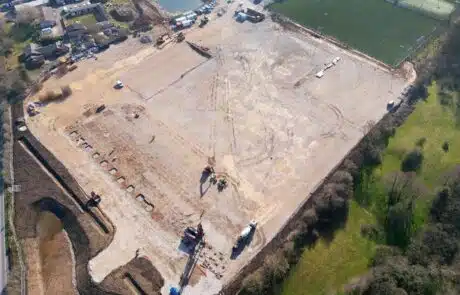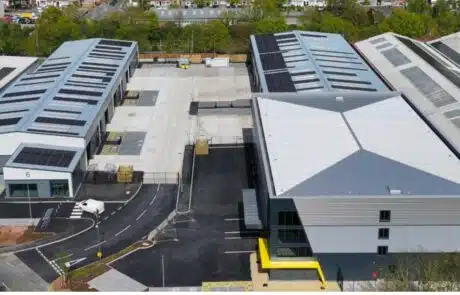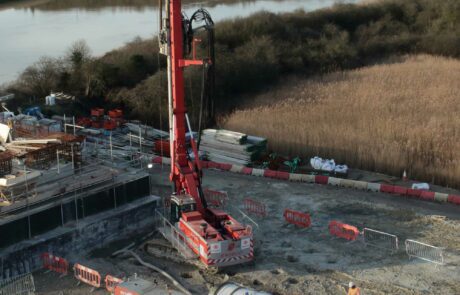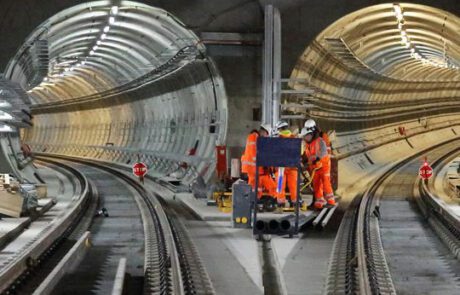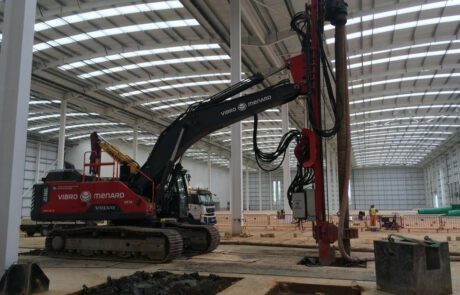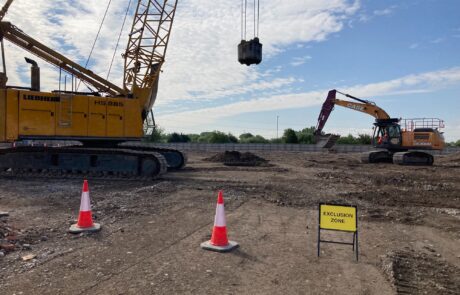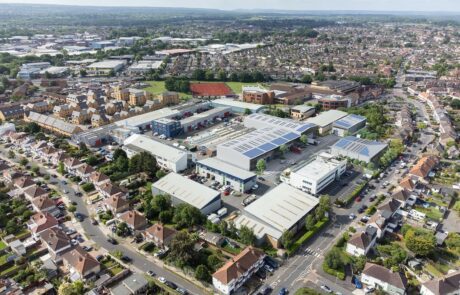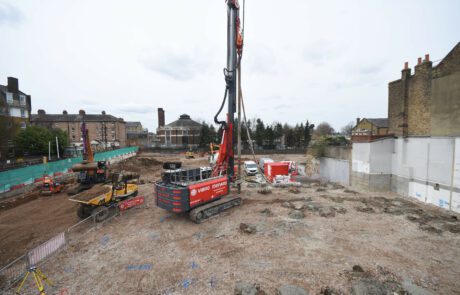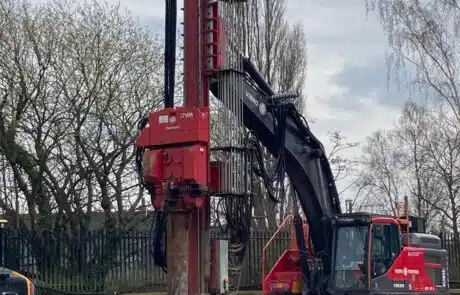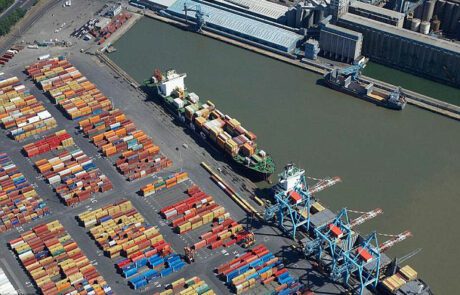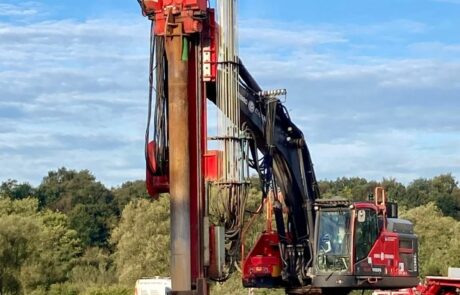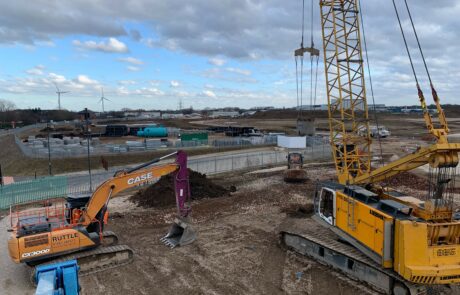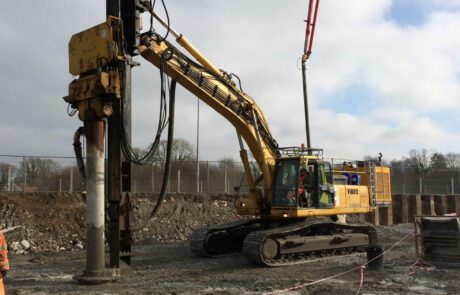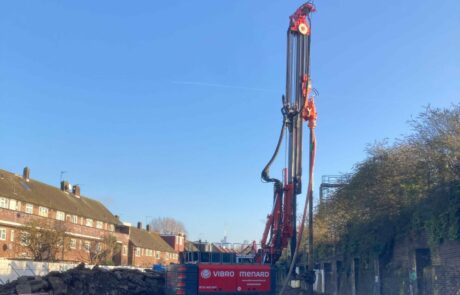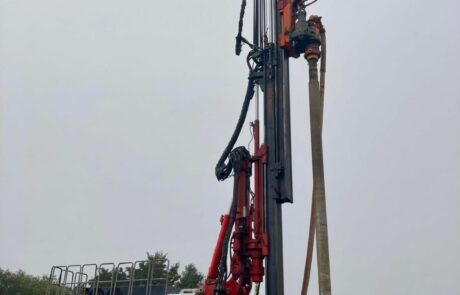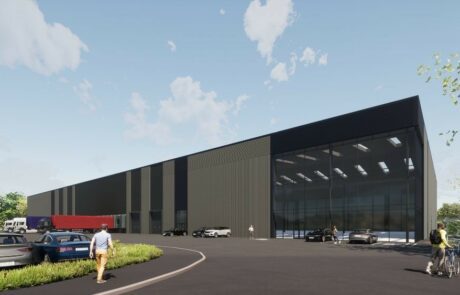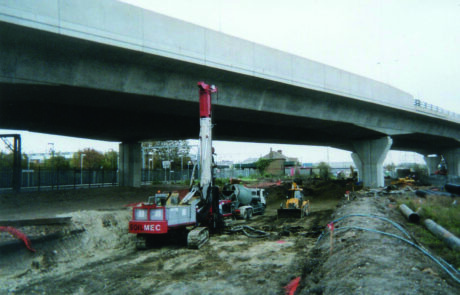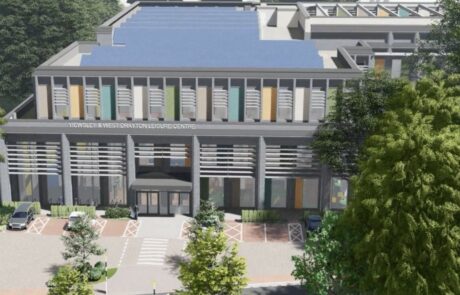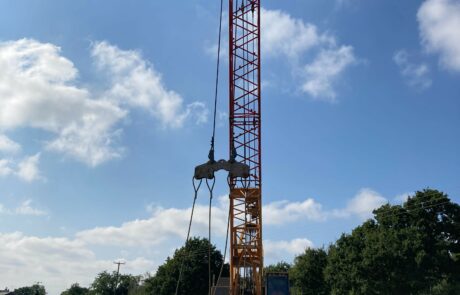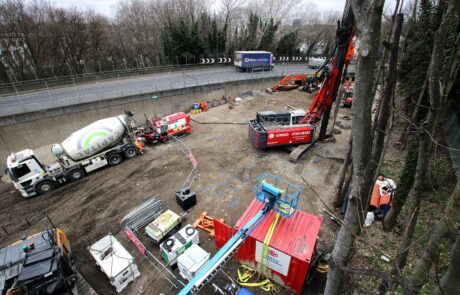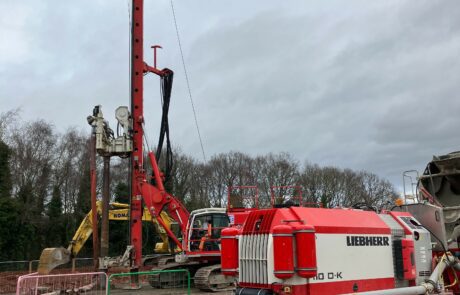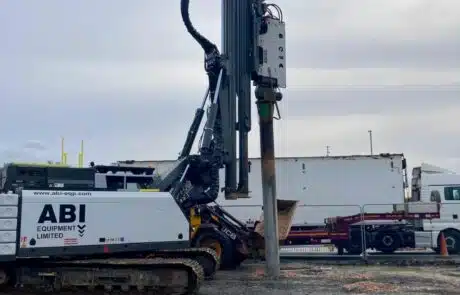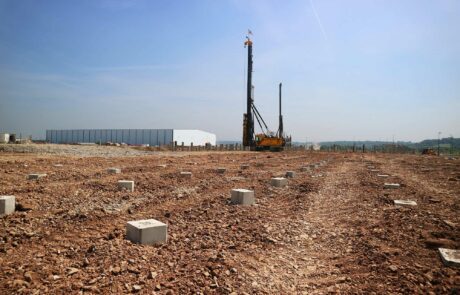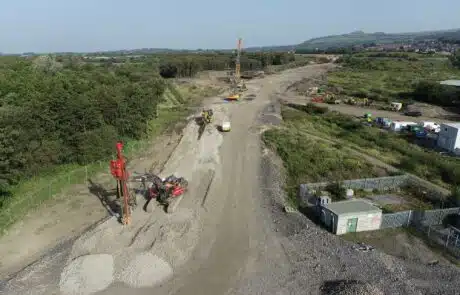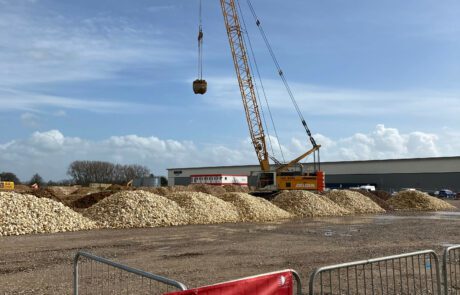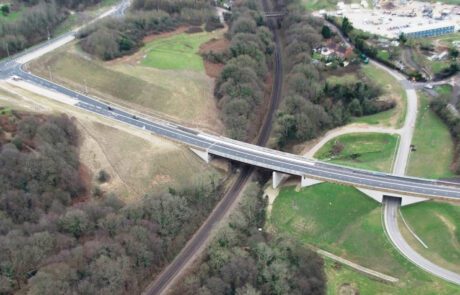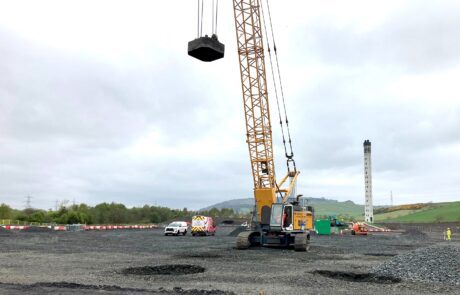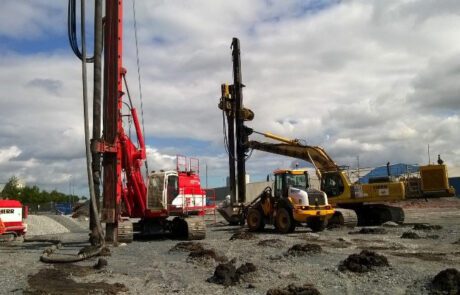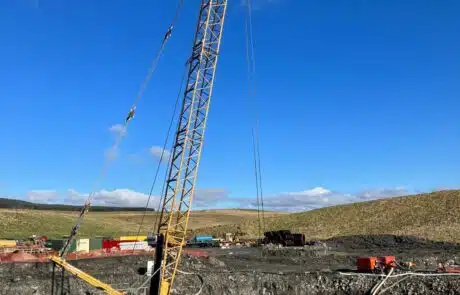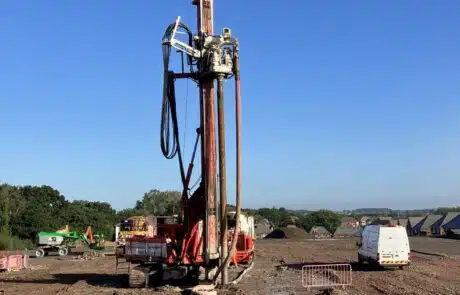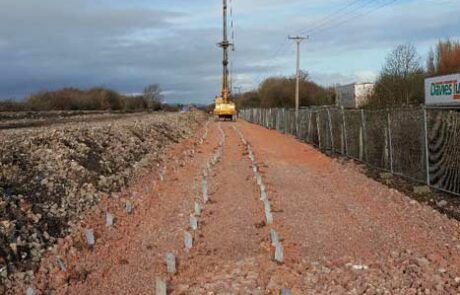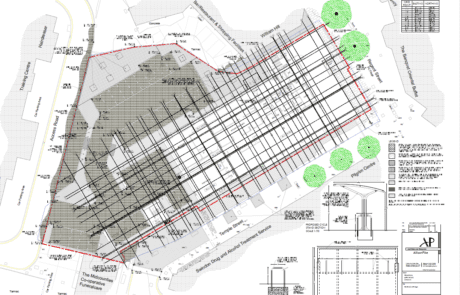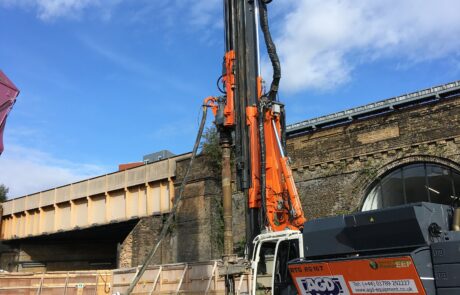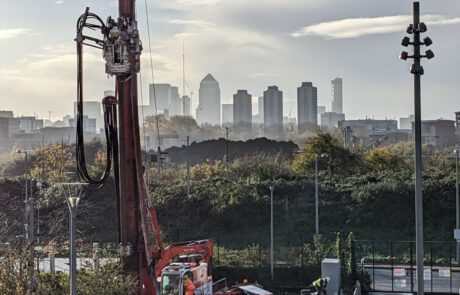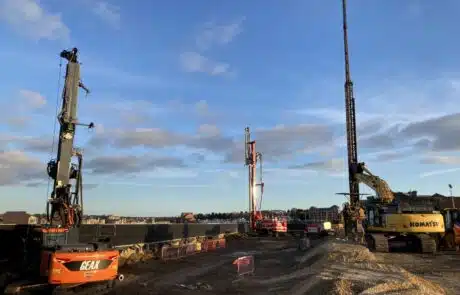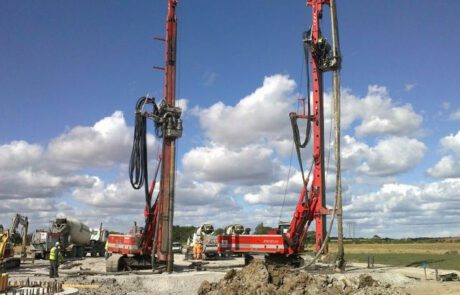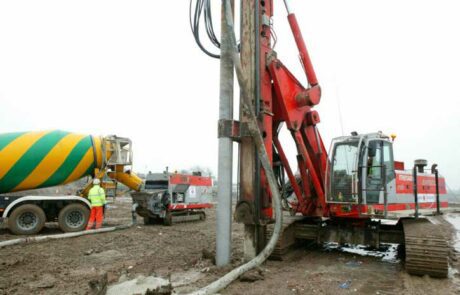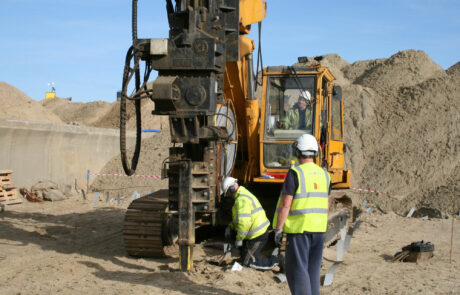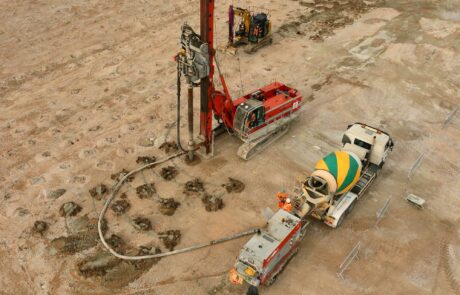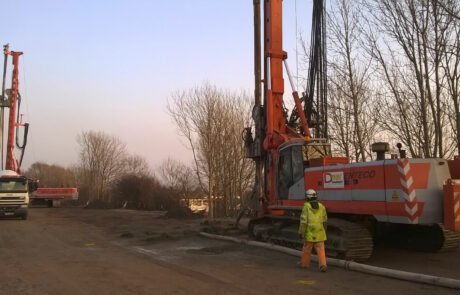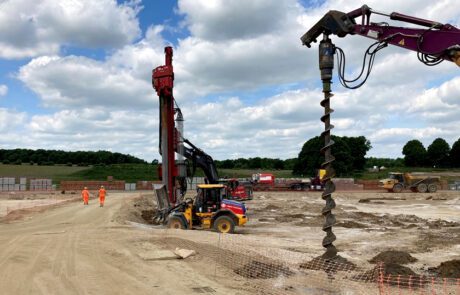OWNER:
Matching Green
ENGINEER:
Terrell
GENERAL CONTRACTOR:
Legendre
MAIN FIGURES:
920 Controlled Modulus Columns (CMC) installed, totalling 3,500 sq/metres
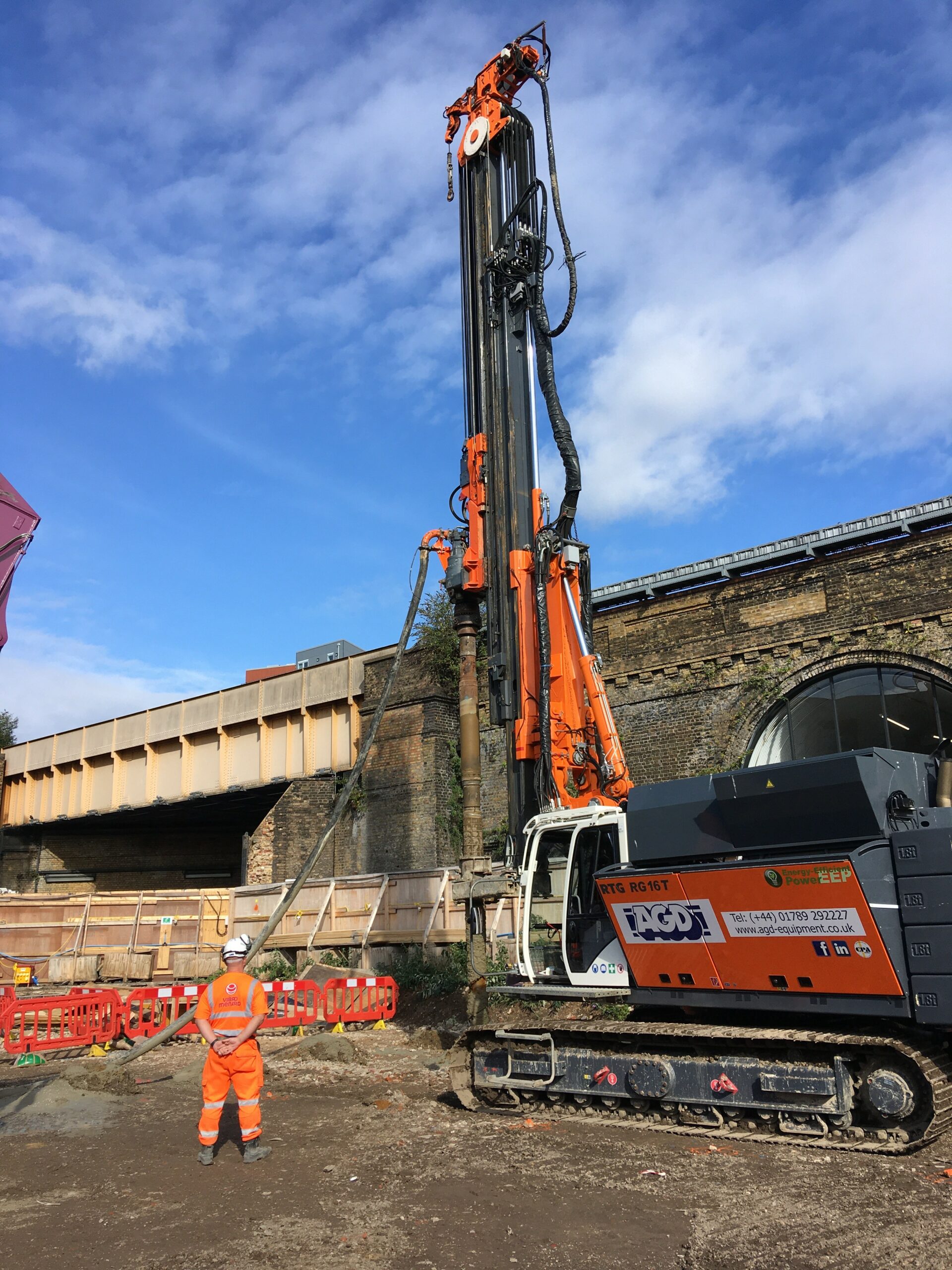
Project Details
In order to find a cost-effective foundation solution for a new residential development in South East London as an alternative to the base solution of CFA piles and small diameter rotary bored piles, Legendre approached Vibro Menard. This project consists of a 9-storey new mix-used development including cafes, restaurants and storages on the ground floor and 111 apartments on the 8 upper levels. The site, previously occupied by industrial units, is located in a dense urban area of Bermondsey and adjacent to the South Eastern railway. The loads brought by the building were up to 240 kPa at foundation level and settlements had to be limited to 30 mm, with relative differential settlements lower than 1/500.
Ground Conditions
The ground conditions are typical of East London, with a succession of Made Ground, Alluvium, River Terrace Deposits and London Clay. Vibro Menard requested additional site investigation by Cone Penetration Tests (CPT) necessary for the detailed design of the ground improvement solution. These CPT confirmed the following soil profile:
- 0.5 m to 1.5 m of Made Ground
- 0.5 m to 1.5 m of Made Ground with a qc of 3 MPa, with a qc of 3 MPa,
- 0.5 m to 1.5 m of Made Ground with a qc of 3 MPa, 1 m to 2 m of soft Alluvium with a qc of 0.55 MPa,
- 0.5 m to 1.5 m of Made Ground with a qc of 3 MPa, Up to 1.5 m of loose sands with a qc of 5 MPa,
- 0.5 m to 1.5 m of Made Ground with a qc of 3 MPa, 3.5 m to 4 m of dense gravels with a qc of 30 MPa,
- 0.5 m to 1.5 m of Made Ground with a qc of 3 MPa, Stiff London Clay below
Solution
Considering the above site conditions, Vibro Menard offered an alternative solution of ground improvement by Controlled Modulus Columns (CMC), allowing the construction of traditional ground bearing rafts. The CMC of diameter 320 mm were embedded 0.5 m into the dense River Terrace Deposits, with lengths were between 3.5 m and 4 m.
Since the pressures at the base of the raft were relatively high (up to 240 kPa SLS), the detailed design carried out by Vibro Menard required a tight CMC spacing of 1.4 m to 1.9 m depending on the loads to ensure compliance with the settlement performance criteria. The CMC were combined with a 350 mm Load Distribution Mattress (LDM) necessary to homogenise the behaviour of the soil reinforced by the CMC. The working platform, after trimming of the CMC on the fresh concrete, was re-used for this LDM, to reduce the import of material.
The 920 CMC have been installed in less than 3 weeks with a single CMC rig, in a narrow urban environment. Specific safety measures had been put in place and briefed to the site team due to the works being adjacent to a live railway. The thorough quality control plan included 2 plate load tests and 2 dummy foundation tests to verify the installation of the CMC. On top of that, the depth, volume used, concrete pressure and drilling energy of each CMC’s were recorded and checked on a daily basis.

